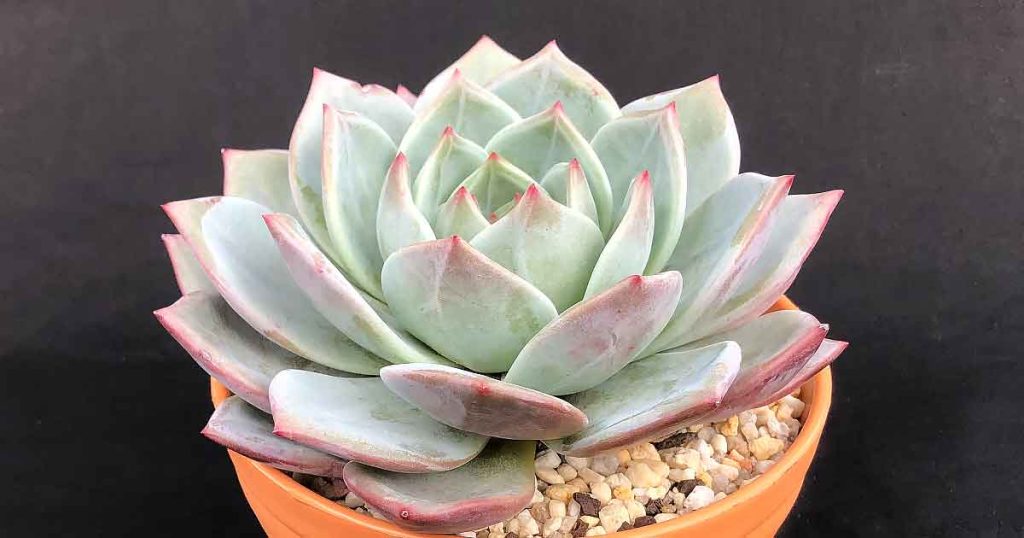
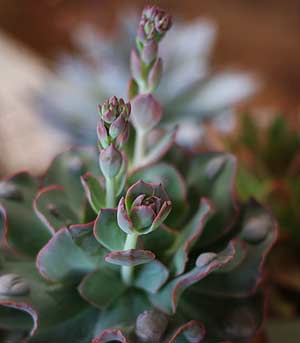
Echeverias are a large group of succulents found over a wide area from Mexico and Central America through to northern parts of South America.
It is Mexico that gives us a huge range, over 150 species and mainly from higher elevations with low humidity and dry areas at higher altitudes.
So as far as climate is concerned, these are not a desert plant, no extreme temperatures and in fact around 25C (80F) is the maximum temperature without risking leaf burn.
They also grow in very well drained rocky soils.
With so many varieties in both flower and leaf form Echeveria are regarded as the most attractive and versatile of all of the smaller growing succulents.
Grown in containers inside and outdoors, and in the garden in warmer zones they are an easy care plant that look great all year round. Summer flowering in most cases, they do need sun to get the best foliage color.
For those looking for Echeveria with dark foliage Echeveria affinis is the species to look for it is known as the Black Echevaria. However a few cultivars are highly regarded, including the hybrid E. Black Prince.
Some Echevarias are distinctly clump forming and will quickly spread to fill a container with offsets appearing frequently. This makes them easy to propagate, and often cheaper to buy.
Other species are much slower to put out offsets, they have a rather solitary habit and are often more expensive.
Care
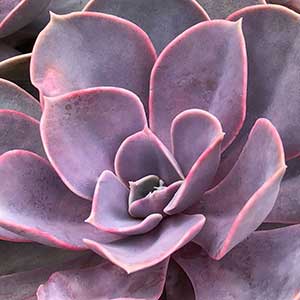
Basic care requirements are a well drained soil and a sunny position. Although they are generally regarded as frost hardy we find that this will depend on the degree of frost.
Hard frosts will be problematical. They do not tolerate freezes, however as they are mostly container grown they can be moved to a protected position.
Watering
Wet soil is one of the main problems with Echeveria and this is caused by overwatering as well as the wrong growing medium.
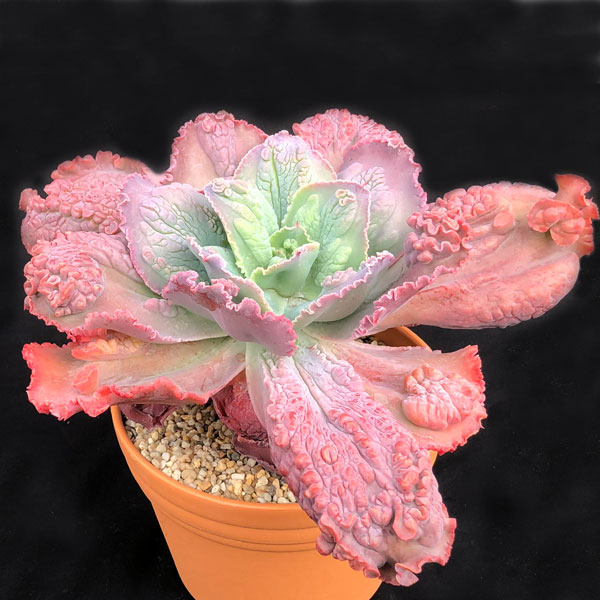
How often you water these succulents will also depend on the climate and the season. So from every 2 weeks to once every 8 weeks.
- How to water and Overwatering
Echeveria do need watering, however not that much. The simple rule is water the plant deeply, and then allow the soil to dry before watering again. - Growing Medium
A free draining growing medium is essential otherwise the soil will not dry out quickly enough to prevent root rot and fungal diseases.
Echeveria Care summary
- A free draining soil is essential, however a good quality potting mix is required for these plants as they are shallow rooted.
- Regarded as drought tolerant, they are best watered every week or so during active growth
- The more sun the better the foliage color, however consistent light is also important.
- In most areas they are best grown in containers and moved indoors during winter.
- Watering should be done by soaking the soil and then letting it dry out before watering again.
- Fertilizer is not required very often, a little seaweed fertilizer every 3 – 4 months is plenty.
Echeveria Varieties
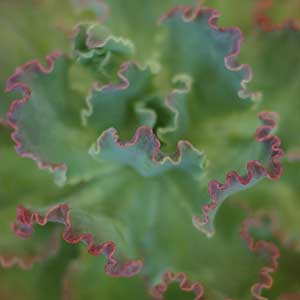
A few species are highly sought after including
- Echeveria elgens with its neat rosettes of silvery leaves and pink flowers in early summer.
- Echeveria gluaca, often called the Mexican Hen and Chicken plant has attractive blue green foliage again neat rosettes of foliage.
- Echeveria imbricata with its flowers on tall spikes is another.
- Echeveria Ebony
- Echeveria Frank Reinelt
- Echeveria agavoides – Molded Wax Agave
And then we have the hybrids such as : - Echeveria “Perle von Nurnberg’, (pictured above right) is a hybrid between E. gibbiflora and E. potosina. In a sunny position, this plant will display brilliant red foliage.
- Echeveria Blue Curls, which is a hybrid of Echeveria shaviana. It is also one of the most popular of frilled leaf varieties. The silvery green blue leaves are margined with pink to red, it forms a nice rosette and will reach 10 – 12 inches (25 – 35 cm) across.
- Echeveria ‘Raindrops’ (pictured top right) with grey green leaves margined with red and fascinating caruncles or ‘bumps’ on the foliage.
- As well as Pachyveria which are a hybrid between Echeveria and Pachyphytum
Top Tips
Echeveria grow best in a humus rich soil mix especially in containers.
Use a general purpose soil mix, rather than a specialist cactus and succulent mix.
Echeveria are available for sale from the following specialist nurseries.
KARA CACTUS & SUCCULENT NURSERY Small, Pacific Northwest retail mail order specialty nursery. Well-grown succulent plants at a reasonable and fair price. We also specialise in rare seed-grown Echeveria, a good selection of Echeverias. www.KaraCactus.com .

